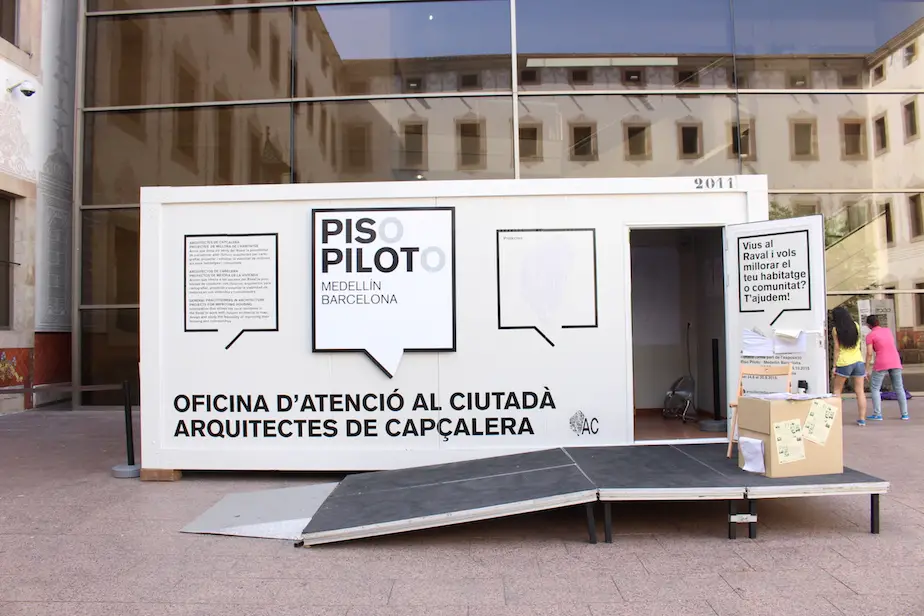Imitate to Innovate: How Vitoria-Gasteiz Addresses 21st Century Urban Challenges
The Spanish city of Vitoria-Gasteiz has recently transformed itself from a congested and car-dominated city into one of the most pedestrian and bicycle-friendly places in Europe. It didn’t achieve this by going at it alone. Its key to success was learning from others.
Cities today are faced with challenges like never before. Rapid population growth, increasing inequality, pollution and congestion are not isolated issues. Rather, they are problems faced by cities across the globe.
While some places are quickly learning to change their old ways and adapt to new circumstances, others are finding it a little more difficult. Perhaps it’s time that those struggling cities to stop simply looking inward, and instead learned from others. After all, if people and businesses copy one-another to succeed, why can’t cities?
Imitation is not just the sincerest form of flattery – it’s the sincerest form of learning. – Bernard Shaw
We now know that our addiction to the car was one of the greatest urban mistakes of last century. Weaning ourselves off this addiction is now one of our greatest challenges. While some cities reconfigure to prioritise people over cars, others are still stuck in the 70s. Sadly, it’s not only the environment that pays the price. Each year thousands of innocent people are killed because urban authorities can’t seem to re-adapt cities for people, rather than for cars.
Over the past few weeks in London we’ve seen outrage over the death of yet another cyclist. In all six of the deaths this year, the incidents involved a collision with a lorry. The problem is obvious: trucks and cars should not use the same lane of traffic as bicycles. The solution to this problem is also simple: separate the modes of transport.
Although people across London are fuming, there seems to be constant resistance to making logical junction and thoroughfare improvements. Surely the hundreds of innocent commuters dying in urban areas each year is enough for a city to make some drastic changes? Well, apparently not.
Although the city’s Mayor is an avid bike rider, plans to develop new bicycle infrastructure remain futile, and anything that has been achieved is ad-hoc and messy. While many progressive cities are quickly figuring it out, London (and many others), remain a dangerous place for people on bikes and on foot.
A couple of years ago, I did some research into why London was finding it so difficult to implemented Danish-style infrastructure. After speaking with experts in London, I took off to Copenhagen to experience riding in the city and speak with urban designers and government officials. It was obvious to see how a combination of traffic calming measures and separated bike paths create a city that is vibrant, safe and beautiful.
The research findings were simple: despite copying overseas lingo like ‘Cycle Superhighways’, London doesn’t really try to copy anyone. It tries to do things its own way. New designs try to please everybody, but in doing so, the results don’t please anybody. What we’re left with is a surface-transport mess. It simply doesn’t work for pedestrians, drivers or those on bikes.
This year, I wanted to find a city that is doing things properly. I wanted to find a place that knows how it wants to improve and is quickly making the right changes to get there. The city I found was Vitoria-Gasteiz – the 2012 European Green City winner.

In just ten years Vitoria has completely transformed itself from a car-dominated, polluted city to one of the most pedestrian and bicycle-friendly in Europe (and probably the world). Today over 50% of people walk to get around and 12% of people ride bikes. The number of people driving cars quickly continues to fall. Compare this with 21% people walking and 3% riding bikes in London, and 10% and 1% respectively in New York City.
I took off down to Vitoria to see the city first-hand and meet some of the people making this transformation happen.
Speaking with the Director of the Environmental Studies Centre (CEA), Juan Carlos, I learned why the city embarked upon this rapid transformation. “Just ten years ago, this city had a lot of problems with the car,” Juan told me, “but people knew it shouldn’t be like that, so we begun to think about how we could change it”.
The CEA receives funding from the city government but really only has one task at hand: improve the way the city functions. It independently advises the government on how it can improve, without getting bogged-down with day-to-day administration. This is very different to most other large cities, which leave important research and plan-making to oversized government bodies. With a relatively small team of a few dozen people, its no wonder the CEA quickly and effectively gets work done.
Juan told me that just ten years ago, the city decided to get off its backside and develop a progressive Sustainable Mobility and Public Space Plan. Instead of just looking inward, the team decided to see what other cities were doing to overcome similar problems. In collaboration with the German NGO for sustainability, Verkehrsclub Deutschland (VCD), Vitoria joined the European Biking Cities project. This enabled the city to learn from other urban areas with ambitious cycling policies.

When learning from others, Juan and his team didn’t simply implement three-metre wide bike paths like Danish cities, or turn one-way streets to two-ways, like in American cities. Instead Vitoria copied and pasted intelligently. Successful elements from elsewhere were carefully integrated into the city’s own context and adjusted where necessary.
Vitoria implemented Copenhagen-style bike paths on wide thoroughfares (when it could afford to); it used the ‘superblock’ idea from Barcelona to divert traffic and free up space for pedestrians; and it took greenways design characteristics from the Netherlands to create beautiful and attractive pedestrian environments, where people would actually want to spend time.
The Sustainable Mobility and Public Space Plan was then fully integrated with a new public transport plan. The aim was not to get as many people onto public transport as possible, but rather to get as many people out of cars as possible. Just like the caution surrounding Copenhagen’s new tram network, the city was careful to ensure public transport did not detract from people walking and cycling, but rather only detracted from the number of those driving. This was achieved through careful network design.
Even as its population soars, Vitoria today is probably more beautiful and vibrant than ever. As I stood with my bike on wide, green boulevards, outside bustling cafes I was shown photographs of the same city streets just a few years earlier – they were almost beyond recognition.

Where cars were parked up on sidewalks, gardens beds now thrive. Where trucks and buses queued for hours in peak hour traffic, people walk and chat in a green corridor, which takes trams into and out of the city centre.
With so many people moving through, and spending time in public spaces, the city has a healthy, social vibe, which simply doesn’t exist where the urban grain has been dissected by busy car thoroughfares. I couldn’t help to imagine what larger cities like London, New York, Sydney and Singapore could become.
In just the past five years, the length of bikeways has increased to 135 kilometres. Unlike London’s lycra-covered, middle-aged men racing each other to the office, bicycle infrastructure means that riding a bike is safe for everyone – of all ages. Segregated bike paths have made Vitoria more inclusive for everyone.
The changes however, have not just been about updating the city’s infrastructure. Creative ways of communicating and educating have been crucial to Vitoria’s success.

Heiko Balsmeyer from VCD told me how the city worked to get local politicians on board so that consensus on important decisions could be reached. It was a process of open communication about the widespread benefits of new ideas. With this knowledge instilled, it would have been simply ignorant for councillors to object to projects that would have obvious, citywide benefits.
Inspired by the UK’s Bikeability Programme, programmes are now being implemented into school curriculums where children are taught to ride safely to school. The hope is that kids will no longer need their parent’s assistance to get about the city.
The range of progressive measures in place to support positive change goes on: the city has overhauled parking policies, updated its branding strategy, and helps support progressive local community groups. Many of these measures have been taken from overseas and adapted into the local context.
Vitoria’s clear success has been in clever imitation. As we embark on a new urban era, it’s about time that cities transfer knowledge, communicate, and work with one-another to overcome what are both local, and global, challenges.
Tom Payne is a London-based planner and cities blogger interested in urban economic development, place making and sustainability. He holds an MSc in International Planning (urban design).


